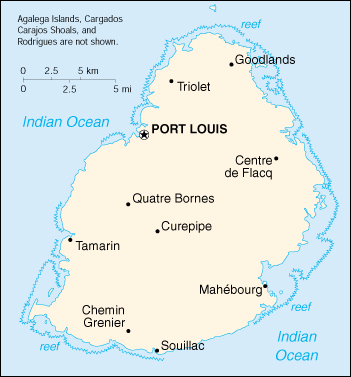Electric Communication Cables Transmit Voice Messages
페이지 정보
작성자 Zane 작성일25-08-17 05:05 조회2회 댓글0건관련링크
본문
 Folding viewfinder, with collapsible manually-set wire body parallax compensation machine (as an alternative of the flip-up put up in the 95). - Film launch push-button switch changed with (extra 'idiot-proof') flip-model switch - Polished steel body with brown fake-leather-based masking. Folding viewfinder, with easy "ball-and-mast" parallax compensation system. Probably the most well-recognized of those is the fact that the majority of them (the first 700,000 or so that have been produced) have a flexible spring publish on the entrance normal (for viewfinder centering and parallax correction), whereas the later manufacturing models (the remaining 1 or 2 hundred thousand or so) have a rigid publish instead. Later manufacturing fashions have further seals for light-tightness when using 3000-speed movie (identified by having the letter 'L' previous the serial number) and slightly later ones but also have a locking cutter bar. The nameplate on the later manufacturing models is silkscreened (in black ink) as a substitute. Partially, this is probably attributable to its relative commonness-- there were close to a million Model 95's produced throughout its production life. One attention-grabbing factor I have observed is that the quantity (and choice) of patents recognized contained in the again of the digital camera changed a number of times in the course of the production life of this digital camera.
Folding viewfinder, with collapsible manually-set wire body parallax compensation machine (as an alternative of the flip-up put up in the 95). - Film launch push-button switch changed with (extra 'idiot-proof') flip-model switch - Polished steel body with brown fake-leather-based masking. Folding viewfinder, with easy "ball-and-mast" parallax compensation system. Probably the most well-recognized of those is the fact that the majority of them (the first 700,000 or so that have been produced) have a flexible spring publish on the entrance normal (for viewfinder centering and parallax correction), whereas the later manufacturing models (the remaining 1 or 2 hundred thousand or so) have a rigid publish instead. Later manufacturing fashions have further seals for light-tightness when using 3000-speed movie (identified by having the letter 'L' previous the serial number) and slightly later ones but also have a locking cutter bar. The nameplate on the later manufacturing models is silkscreened (in black ink) as a substitute. Partially, this is probably attributable to its relative commonness-- there were close to a million Model 95's produced throughout its production life. One attention-grabbing factor I have observed is that the quantity (and choice) of patents recognized contained in the again of the digital camera changed a number of times in the course of the production life of this digital camera.

Look up the various patent numbers listed contained in the digital camera. Note 2: Unlike later Polaroid rollfilm digicam models, the ninety five has a pair of clips in the film chamber to hold the "damaging" roll in place. Model 95B (shown with a compact Polaroid leather case of the identical era. Model 95 (proven with authentic box). The box on this image is a later model by which the cover lifts off the underside. This field has a pull-off endcap instead, and precedes the opposite field model pictured. I don't know at what level the field changed, but it surely was in all probability after the first 400,000 not less than. Cables fabricated from optical fibres first came into operation in the mid-1970s. The benefits of fibre-optic cables over conventional coaxial cables include low materials price, excessive transmission capacity, low sign attenuation, data safety, chemical stability, and immunity from electromagnetic interference. With fibre-optic cables, made from versatile fibres of glass and plastic, electrical alerts are converted to gentle pulses for the transmission of audio, video, and computer data. Needless to say numbers are subject to change as new information is collected. Protective coverings for electric communication cables are just like those for electric energy cables.
 Cables operating at decrease voltages incessantly have coverings of asphalt-saturated cotton braid, polyethylene, or other dielectric (nonconducting) materials. These coverings provide some safety towards brief-circuiting and unintended electric shock. Aerial and underground power cables compose a serious portion of the electrical circuit from the generator to the purpose of utilization of the electric power. Many aerial cables, especially these working at high voltages, are naked (uninsulated). Power cables are designed for high voltages and excessive present masses, whereas each voltage and present in a communication cable are small. Electric communication cables transmit voice messages, computer data, and visible images by way of electrical signals to telephones, wired radios, computers, teleprinters, facsimile machines, and televisions. Power cables function on direct current or low-frequency alternating present, whereas communication cables operate at larger frequencies. Copper or aluminum is chosen for top electrical conductivity, while stranding provides the cable flexibility. Because aerial cables are continuously subjected to severe environmental stresses, alloys of copper or aluminum are typically used to extend the mechanical power of the cable, though at some detriment to its electrical conductivity.
Cables operating at decrease voltages incessantly have coverings of asphalt-saturated cotton braid, polyethylene, or other dielectric (nonconducting) materials. These coverings provide some safety towards brief-circuiting and unintended electric shock. Aerial and underground power cables compose a serious portion of the electrical circuit from the generator to the purpose of utilization of the electric power. Many aerial cables, especially these working at high voltages, are naked (uninsulated). Power cables are designed for high voltages and excessive present masses, whereas each voltage and present in a communication cable are small. Electric communication cables transmit voice messages, computer data, and visible images by way of electrical signals to telephones, wired radios, computers, teleprinters, facsimile machines, and televisions. Power cables function on direct current or low-frequency alternating present, whereas communication cables operate at larger frequencies. Copper or aluminum is chosen for top electrical conductivity, while stranding provides the cable flexibility. Because aerial cables are continuously subjected to severe environmental stresses, alloys of copper or aluminum are typically used to extend the mechanical power of the cable, though at some detriment to its electrical conductivity.
These aerial cables encompass various wires, normally of copper or aluminum, twisted (stranded) together in concentric layers. Unlike an aerial cable, a buried cable invariably makes use of commercially pure copper or aluminum (mechanical energy is just not an issue underground), and the stranded conductor is continuously rolled to maximise its compactness and electrical conductance. Usually, the core is lined with a layer of copper to enhance conduction over long distances, followed by a material (e.g., aluminum foil) to block the passage of water into the fibres. They usually consist of an aluminum or lead-alloy tube or of a combination of metallic strips and thermoplastic materials. The cable core incorporates a single stable or stranded central energy aspect that is surrounded by optical fibres; these are either organized loosely in a inflexible core tube or packed tightly into a cushioned, versatile outer jacket. A coaxial cable, which first gained widespread use during World War II, is a two-conductor cable in which one of the conductors takes the form of a tube while the other (smaller but in addition circular in cross section) is supported, with a minimal of solid insulation, on the centre of the tube. Usually the previous refers to a single, solid metallic conductor, with or without insulation, whereas the latter refers to a stranded conductor or to an assembly of insulated conductors.
If you have any sort of inquiries regarding where and the best ways to use what is electric cable, you can contact us at our own web-site.
댓글목록
등록된 댓글이 없습니다.

